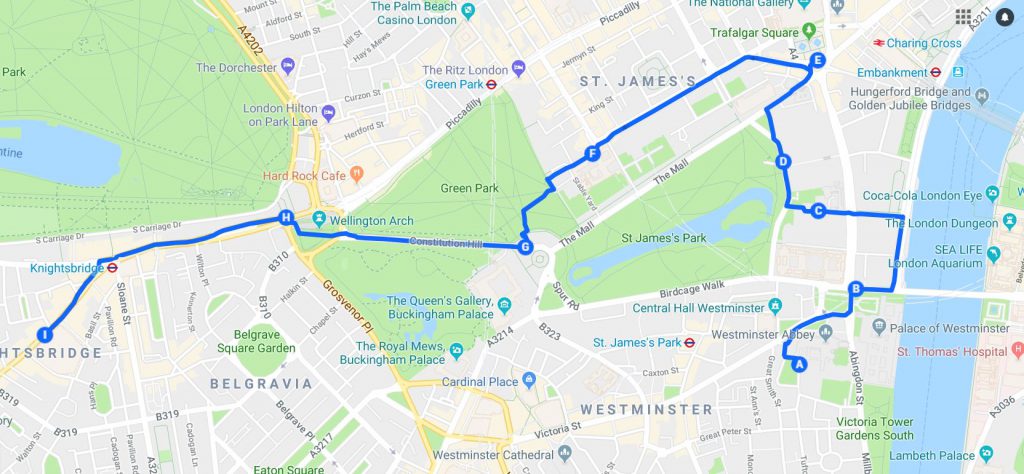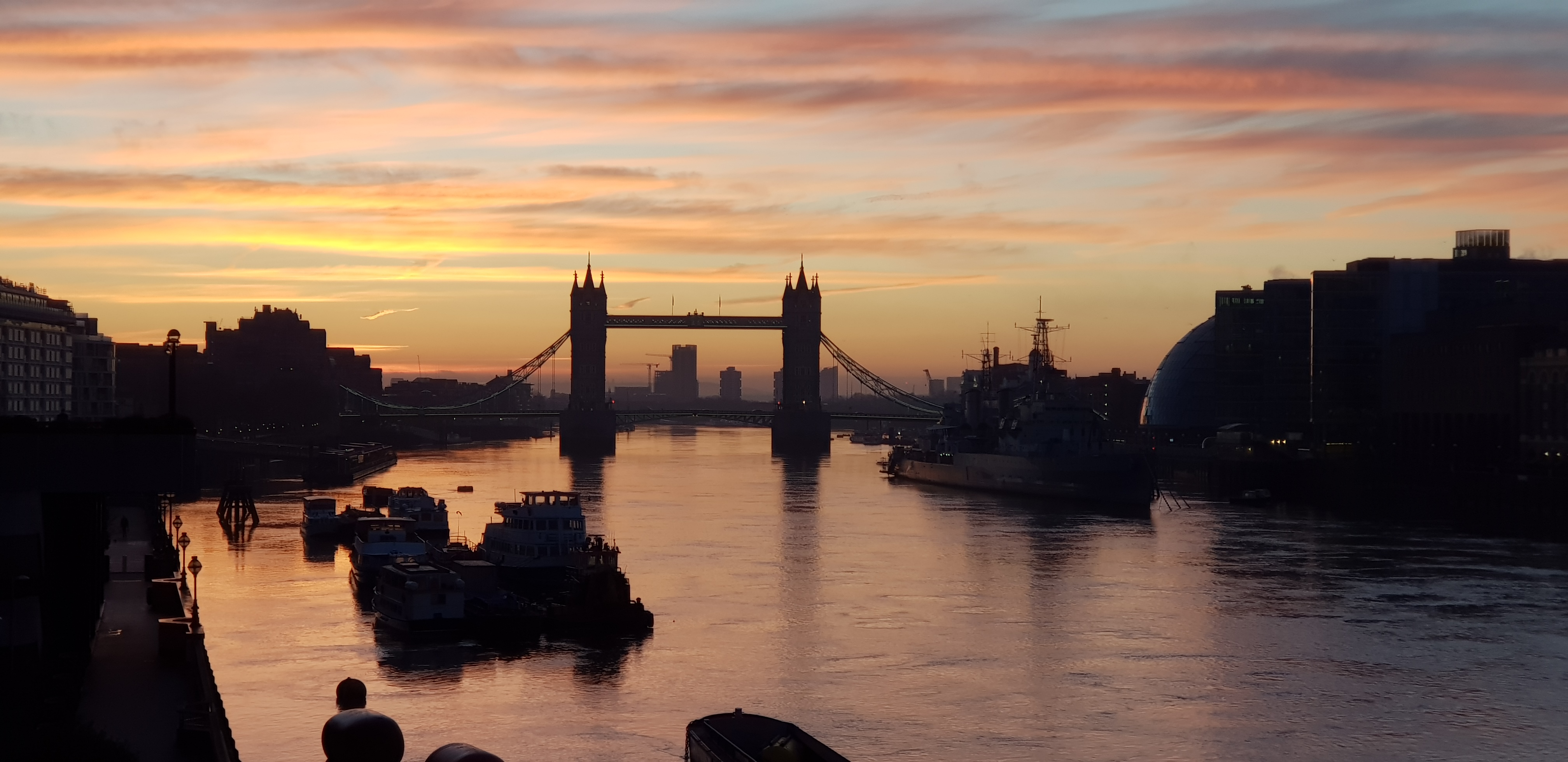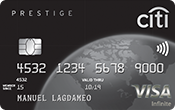London is probably one of the most popular cities in the world and the most influential city in history. The British Empire is quite the global political power of its time and held a lot of dominion from Australia to Zimbabwe. That said, London in particular is quite interesting historically and culturally.
London is one of the most densely populated cities in Europe. It’s a stark contrast if you would compare it from Germany but something closer to Paris or Rome. Good thing with London is there’s so much to do in the city: museums, theater, pubs, cafe, restaurants, high tea and a lot more. Bad news though, London is expensive! So, you have to budget more.
Where to stay
Hostels and hotels are definitely expensive. A cheapest bed in a hostel dormitory will set you back around £20. A bed outside the city might be cheaper though.
If you are not into hostels though, a decent hotel will definitely cost around £100 per night at the very minimum. Same as hostels, a room outside the city will be cheaper.
The best option though is AirBnb. There are a lot of AirBnb listings within the city with good location. I recently stayed at a private room AirBnb a few minutes away from Aldgate East station for about £35 per night.
Getting inside the city
There are number of airports within the vicinity of London: Gatwick, Luton, Stansted, Heathrow, City Airport and Southend. I have personally been to Stansted and Heathrow so I can only speak for those airports for now.
Stansted airport is outside London but it’s less than 2 hours from city. If you are flying via Ryanair, it’s most likely that you will land in Stansted. It’s sort of a budget airport that is conveniently close. There are number of bus and train service from Stansted Airport. The most common bus and train service provider from Stansted is National Express (which is also the largest operator in UK). If you don’t have a ticket towards London, don’t worry. You can buy it from the Airport. There are booths airside and a lot of booths at landside and outside the airport. You cannot miss them. Alternatively, you can also book in advance via Online Booking. Honestly, it’s not needed but if you are the type of traveler that wants to pre-book everything, should be ok as well.
Heathrow airport is the largest airport in UK. It’s the busiest airport in Europe and third busiest in the world. Interestingly though, it does not feel that busy at least on my experience. There are 4 terminals and can easily be accessed via the tube (underground). If you have an oyster card already, you can take the underground train towards the city.
- Take the Piccadilly line from Heathrow to city center via a number of stops like King’s Cross, Knightsbridge, Hammersmith, Greenpark, etc. Just a small warning, Piccadilly line is probably one of the busiest line and one of the older rolling stocks so the train itself is quite small and compact. If you are carrying big luggages during rush hour, avoid Piccadilly line. However, if you already have an oyster card and want to save more money, this is a viable option.
- Another option is to take Heathrow Express to Paddington Station and transfer to Circle/District/Bakerloo/Hammersmith and City. You can go anywhere from Paddington and the advantage is you can take newer and less busier train systems such as Circle and District. The one disadvantage is that Heathrow express is expensive.
- Take a bus to the city and stop at Victoria Coach station. If you don’t want to carry or hold your baggage while traveling, this is a good option. Also, it’s relatively cheap. The tickets can go as low as £6 per person. In terms of travel time, it should relatively be the same as the other options. The big disadvantage is that you have to deal with London traffic.
Get an oyster card
If you are planning to travel around via city train and bus, you would need to get an Oyster card. There’s no need to get it in advance or to buy tourist oyster cards. Also, there’s no need to buy day passes because oyster cards have daily caps depending on the zones that you travel. There are roughly around 6 zones but most places to visit are within Zone 1 and 2. London is foot friendly however buses and trains are still the preferred especially if you plan to visit a lot of sites in a day. The daily cap for Zone 1 and 2 is £6.80.
Again, do not buy daily travel cards because the daily cap for Zone 1-4 (£9.80) via oyster card is lesser than the price of daily travel cards (£12.70). You are basically losing about £3.00 per day with daily travel cards. Travel Cards are basically tourist traps.
You can buy an oyster card in any city train station. You can buy it directly from the cash machines so you don’t need to go to any desks to buy it. There’s a £5.00 deposit though but you can refund it after 2 days of use. It does not expire so you can pass them along after you use it or keep it for your next travel.
There is such a thing as free lunch (or to be more accurate, free attractions)
Interestingly, the some of the best tourist attractions in London are free. The thing is, the British Empire has colonized a lot of countries through out its prosperous “colonizing” times. One of the things that they did was to get relics from other countries and store them in London. Here are some of the noteworthy attractions that you can visit.
- British Museum – one of London’s top attractions and it’s completely free. They have relics from Ancient Egypt, Africa and Rome. I can honestly say that they can rival the Louvre but with lesser people and infinite times cheaper. They have the only surviving piece of the Rosetta stone on permanent collection.
- Museum of London – it’s one of the interesting museum that lets you travel in time of London’s past, present and future.
- The National Gallery – it houses one of the most important art collections around the world with masterpieces from Van Gogh, Renoir, Monet, Vermeer, Raphael and da Vinci
- Parks – there are a lot of parks within London city despite being one of the denser cities in Europe. Good thing though is that it’s free.
This is not an exhaustive list of free attractions as there are still a lot more. Unfortunately, we did not have enough time to visit all of them.
Key places to visit
If you are a big fan of royalty (or not), one simply cannot visit London for the first time and not visit the cultural center of London which spans from Westminister to Kensington Palace. From Westminister Station, you can visit the Big Ben and House of Parliament. A few steps from the House of Parliament is the Westminister Abbey, one of the most important religious sites in London. From Westminister Abbey, you can head down towards St. James’s park to visit Churchill’s war room or view site of the Horse Guard Parade. From there, you can either have a relaxing time at St. James’s park or you can also head down Trafalgar Square, an important public square dating back to 13th century. From Trafalgar, you can walk down The Mall street towards Victoria Memorial. You can take a look at Clarence House, the residence of the Prince of Wales, St. James’s Palace, London residence of some of the royalties like Princess Anne, Princess Beatrice and Eugenie of York. This street is probably the most royal of residences that you can see especially that at the end of the stretch is the Queen’s residence at Buckingham Palace and Victoria Memorial. Right beside Buckingham Palace is Hyde Park that stretches from Lancaster House to Kensington House, the residences of Duke and Duchess of Cambridge (Prince William and Princess Kate), Prince Harry, Duke of Gloucester, Duke of Kent and many more. Around Hyde Park is the ultra luxurious streets of Knightsbridge and the district of Mayfair. So, if you are quite tired of royalty, you can pretend to be uber rich while walking the streets.
Here’s a sample route that you can take and visit most of the sites within the vicinity.

You can also visit London Bridge and Tower Bridge which are parallel each other. A lot of first time tourist will confuse Tower Bridge as London Bridge because London Bridge is more famous. Tower bridge is easily identifiable with its two tower. Near the Tower Bridge is the Tower of London, a historic royal palace that played a prominent role to British history. It was originally built during King Richard the Lionheart’s reign. It had been the location of a number of important events in British history such as Anne Boleyn, Queen of England’s, execution.
There’s simply too much of cultural and historic things to do in London.
Cost of food
London is relatively more expensive than other cities in Europe. A cheap meal can set you back £5. My personal favorite (because I absolutely love Peri-Peri) is Nando’s. Just to be clear, this is not representative of what London has to offer. Nando’s is a South African restaurant that serves Portuguese food. So, yes, it’s a complete opposite of British food. But, it’s absolutely delectable. It will cost you less than £10 for a half chicken with a couple of sides. A proper fish and chips will cost you around £10 – 15. A good breakfast will cost around £10 for a full English Breakfast while a high tea, if you feel fancy, will cost you around £30 – 50 for two.




 If you see this sign in your bottle, it means that there’s a 8 to 25 cents deposit on the bottle. It’s quite easy to refund them as well. Go to your nearest supermarket (Aldi, Rewe, Netto, etc) and get the refund back. Germans really take recycling seriously.
If you see this sign in your bottle, it means that there’s a 8 to 25 cents deposit on the bottle. It’s quite easy to refund them as well. Go to your nearest supermarket (Aldi, Rewe, Netto, etc) and get the refund back. Germans really take recycling seriously.
